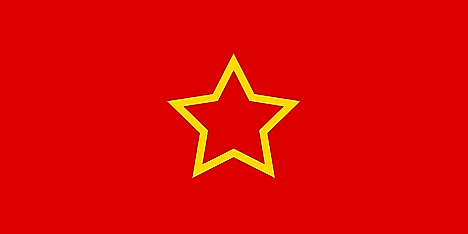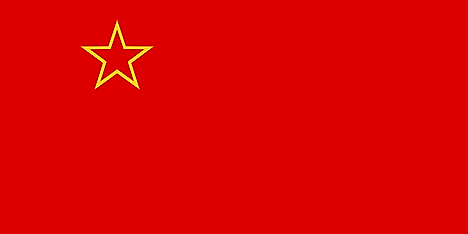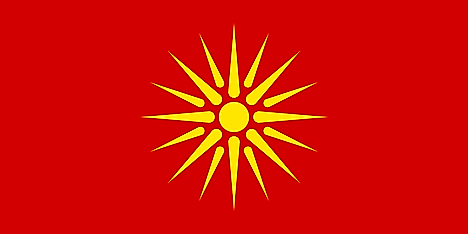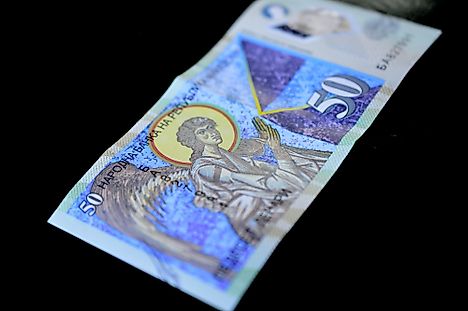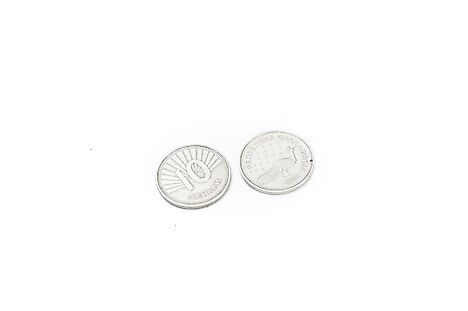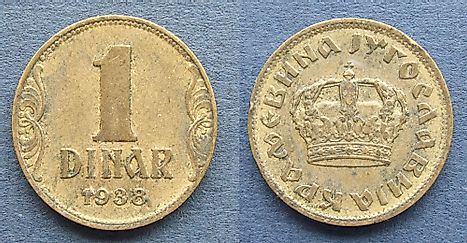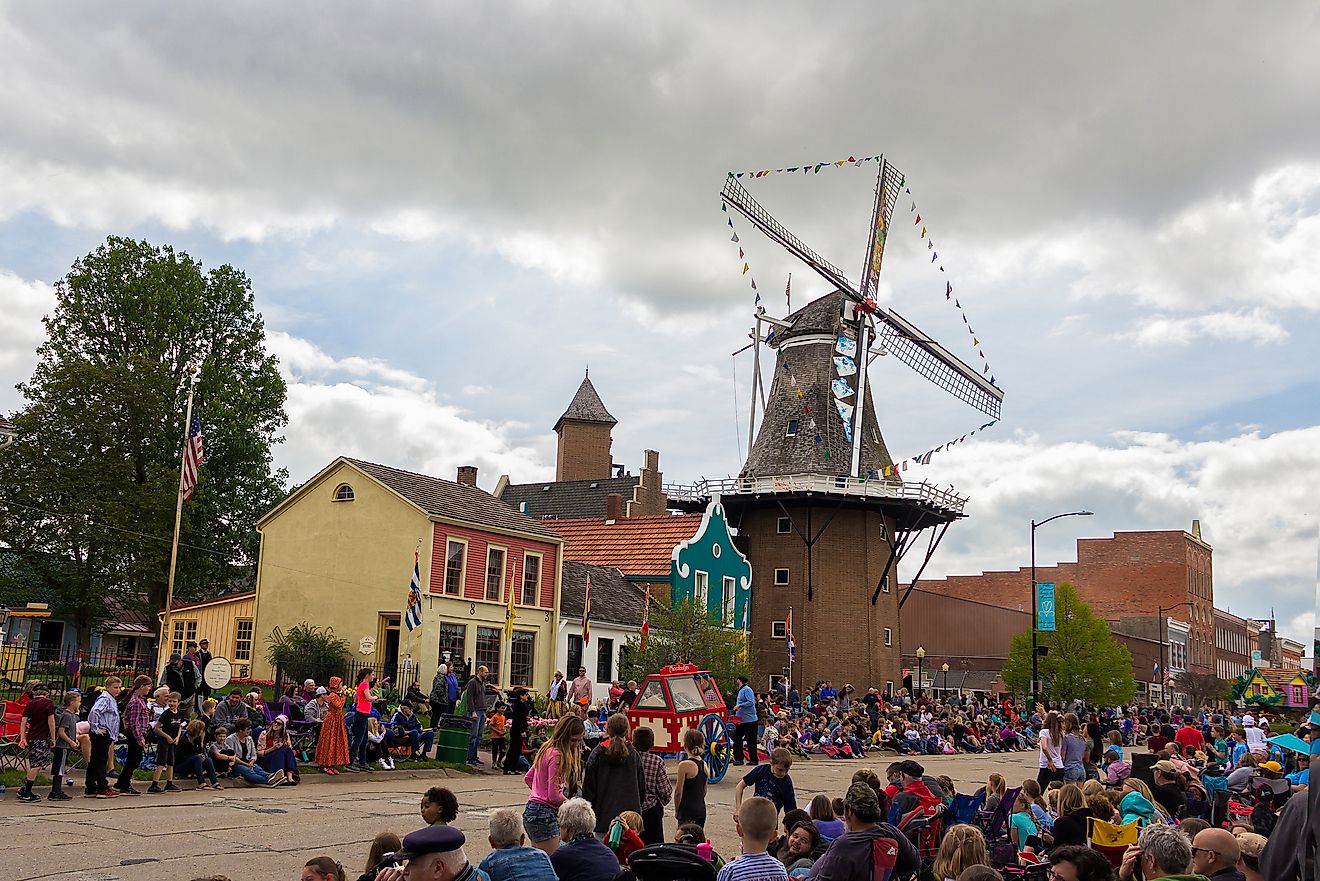Flags, Symbols, & Currencies of Macedonia
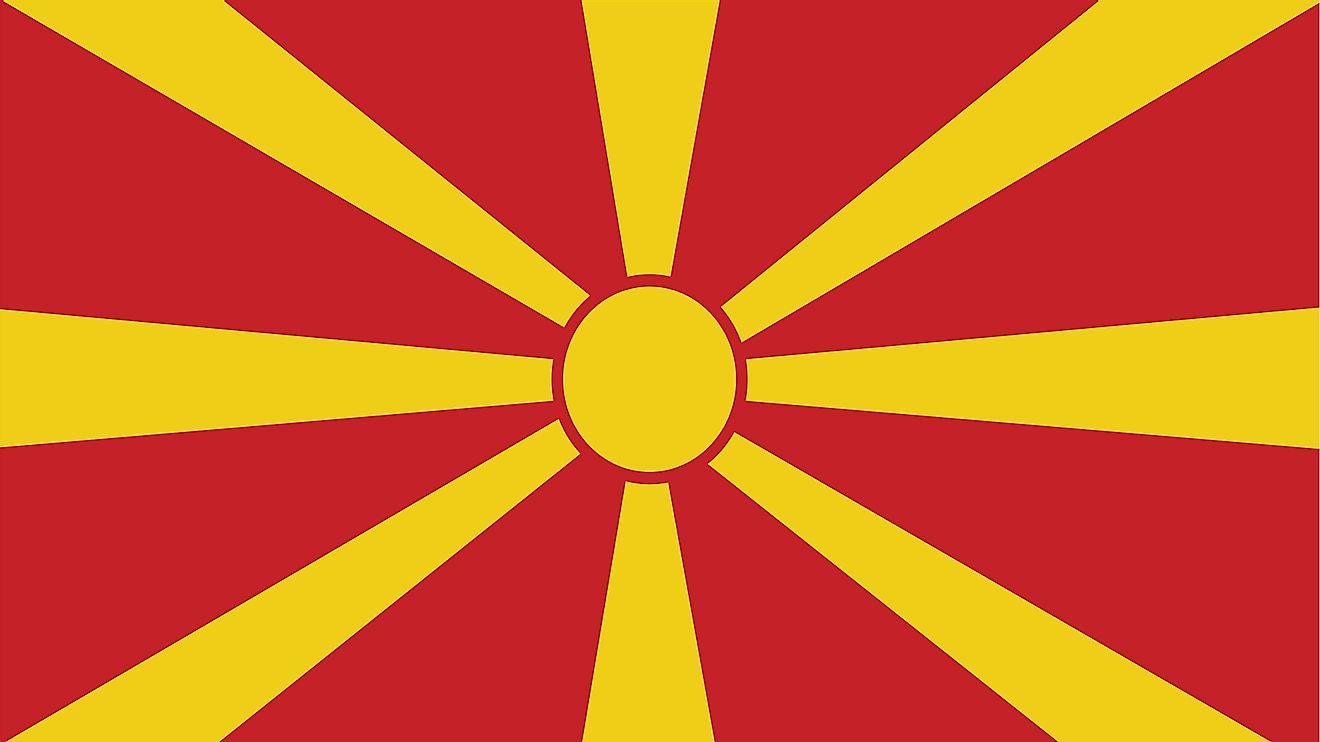
Macedonia’s national flag was designed by Prof. Miroslav Grčev, an architect and graphic designer. It was formally adopted on October 5, 1995. The national flag of Macedonia has a red field. A stylised yellow sun is featured in the center of the field. Eight broadening yellow rays extend out from the sun in all directions and end at the edges of the flag.
Red, one of the colors used in the flag, is one of the traditional colors of Slavic Macedonia. Red and yellow/gold is also part of the nation’s heritage. The stylized sun seen in the flag symbolizes the “new sun of Liberty” that is mentioned in the country’s national anthem and also in the Coat of Arms. The national flag of Macedonia has a height to length proportion of 1:2
History of the flag
When Macedonia was a part of Yugoslavia, the country’s flag had a red field with a star in the canton. The star was red with yellow borders. For a brief time, the Macedonian flag depicted the Vergina Sun which was one of the symbols used in the grave sites of ancient Kings of Macedon. However, Greece strongly opposed the use of this flag as Greece considered the Vergina Sun to be a Greek symbol. Greece even imposed an economic blockade for a year to force Macedonia to change the design of its flag.
Finally, a new flag, the current version that we see today, was adopted in 1995 where the Vergina Sun was replaced with a stylized sun. This change in the flag’s design was not initially accepted by the conservative citizens of Macedonia. For some years, both the old and the new flags were used in the country. In some parts of the country, only the old flag was accepted. Today, the new flag is used throughout the nation.
Symbols of Macedonia
National Coat of Arms of Macedonia

Macedonia's current national emblem was adopted on July 27, 1946, shortly after Macedonia became part of the Yugoslavia. It features several elements, including two curved garlands of wheat, opium popy fruit, and tobacco leaves tied with a red ribbon with traditional Macedonian folk motiffs. Inside the emblem are a lake, blue mountain, and golden sun risingng behind the mountain. The emblem contains a Mount Korab, Lake Ohrid, Vardar River, and sunrise (representing the richness of the country and struggle for freedom)
National Anthem
- Anthem Title: Denes nad Makedonija ("Today Over Macedonia")
- Music composer: Todor Skalovski,
- Lyricist: Vlado Maleski
- Date of Adoption: 1992
Denes nad Makedonija ("Today Over Macedonia") is the national anthem of Macedonia. The lyrics were written by Vlado Maleski in 1943 but the music was composed in 1941 by Todor Skalovski and adopted as national anthem of Macedonia in 1992. The lyrics reflect a military marching song. Although Denes nad Makedonija consists of four verses, the government website often omitt the second verse. However, the law does not specify the stanzas that constitute the official anthem.
Denes nad Makedonija
Denes nad Makedonija se raǵa,
novo sonce na slobodata!
? Makedoncite se borat,
za svoite pravdini! ?
Vtora strofa:
Ne plači Makedonijo majko mila,
Kreni glava gordo, visoko,
? Staro, mlado, maško i žensko,
Na noze se krenalo! ?
Treta strofa:
Odnovo sega znameto se vee,
na Kruševskata Republika!
? Goce Delčev, Pitu Guli,
Dame Gruev, Sandanski! ?
Četvrta strofa:
Gorite Makedonski šumno peat,
novi pesni, novi vesnici!
? Makedonija slobodna,
slobodno živee! ?
Today Over Macedonia
Today over Macedonia is born
the new sun of liberty.
? The Macedonians fight
for their own rights! ?
Do not cry, dear mother Macedonia,
Raise your head proudly high,
? Old, young, men, and women,
have risen to their feet! ?
Now once again the flag flutters,
(that) of the Kruševo Republic
? Gotse Delchev, Pitu Guli
Dame Gruev, Sandanski! ?
The Macedonian woods resoundly sing
new songs and news!
? Macedonia liberated
lives in liberty!
The Currency of Macedonia is the Macedonian Denar
The official currency used in Macedonia is the Macedonian denar. The denar uses the code MKD and symbol den. It is subdivided into 100 deni. The name of the currency is derived from the word denarius, which is an ancient Roman monetary unit. The denar is issued by the National Bank of the Republic of Macedonia.
A second Macedonian Denar was introduced in May 1993. The central bank issued coins in denominations of 1, 2, and 5 denari, as well as 50 deni. Coins valued at 10 and 50 denari were later introduced in November 2008. Due to the small number of 50 deni coins produced, it was withdrawn from circulation in 2013. The denar coins were minted by the Suvenir factory, which is located in Samokov. Three commemorative coins, the 1, 2, and 5 denari, were struck in honor of the Food and Agriculture Organization of the United Nations (FAO). Second denar banknotes were issued in denominations of 10, 20, 50, 100, and 500 denari. Three years later, 1000 and 5000 denari notes were issued. In 2016, the central bank introduced 200 and 2000 denari notes, with an aim of withdrawing the 5000 denari banknote.
Currently, the most frequently used banknotes in Macedonia are the 10, 50, 100, 200, 500, 1000, and 2000 denari notes. The 5000 denari note is rarely used. The 1, 2, 5, 10, and 50 denari coins are most popular.
Historical Currencies of Macedonia
The first Macedonian denar was introduced on April 26, 1992. This new currency served as a replacement for the Yugoslav dinar and the Serbian dinar that came before it. The first denar was purposefully introduced to ensure there was monetary independence in the newly created Republic of Macedonia. A national bank was established on April 26, 1992 and denar was declared the national currency. On the following day, notes were introduced and began to circulate. Three days later, the Yugoslav dinar was no longer used as a legal tender.
First Macedonian Denar
The first denar was used between 1992 and 1993. No coins were ever issued. However, temporary banknotes were issued, which were commonly referred to as value coupons. The printing of these notes began on January 15, 1992, and they were introduced into the economy one day after the establishment of the national bank. A printing firm named “11 October” was responsible for designing and producing the notes. The six lowest denominations were identical in all aspects, except the color. This invariability was due to the limited time and budget provided. The banknote design featured two women and a man picking tobacco, as well the Makedonium monument, which is located in Kruševo.
